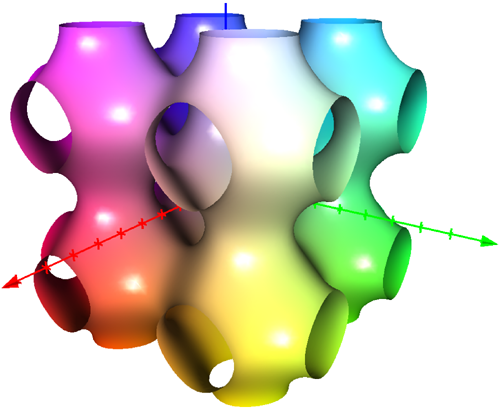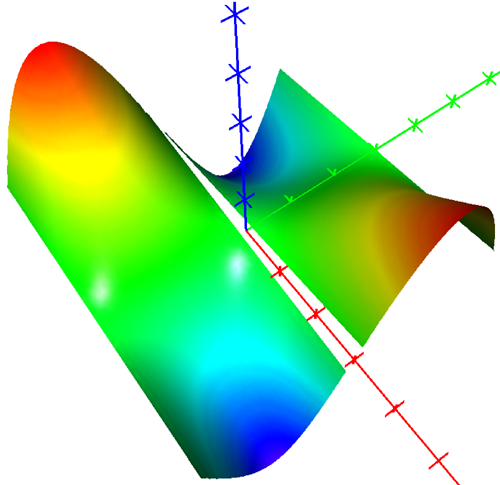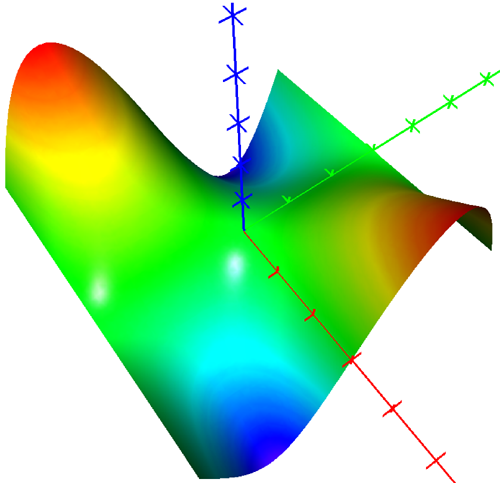
The implicit equation can be entered as in the examples above. Here we find for instance the graph of cos(x)+cos(y)+cos(z)=0, with x, y and z between -2*pi and 2*pi:

We notice that the program has more computations to make when drawing an implicit equation. This is because the volume that is visible in the graphics window is divided into small tetrahedra. By increasing the accuracy, the number of tetrahedra is increased such that the graph becomes more accurate but at the cost of computation time. The accuracy in the z-direction can not be altered manually. VisuMath chooses the minimum of the number of subdivisions in the x- and y-direction.
Try to write the equation in such a way that no singularities occur. The equations x=z/sin(y) and x*sin(y)=z mathematically represent the same object but VisuMath gives (because of numerical reasons) a better result in the second equation, compared to the first equation, as can be seen below:
 |
 |